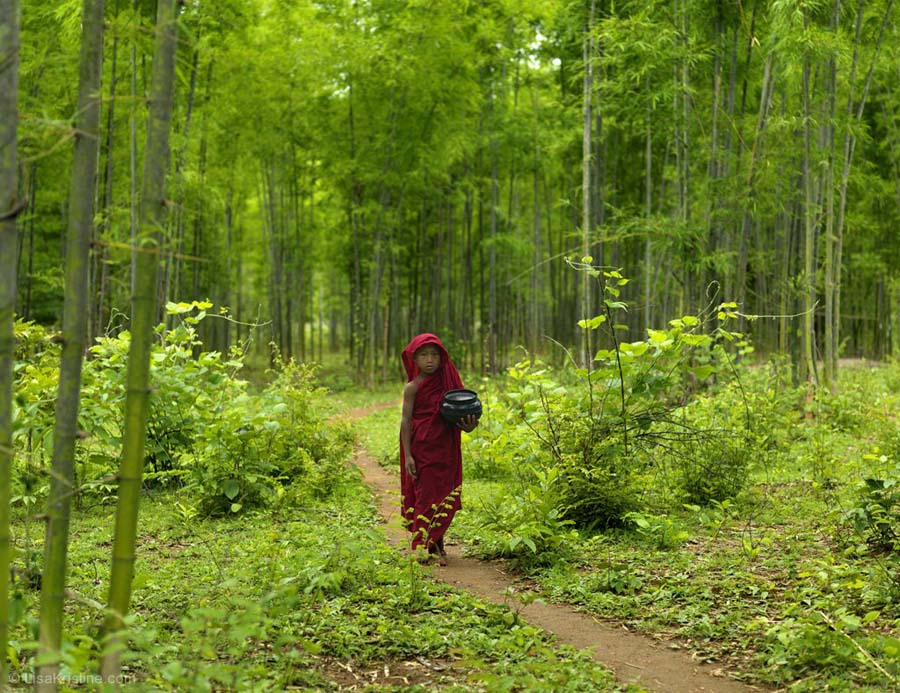
Forest Sector and Restoration and Reforestation Program Review in Myanmar
Program Summary
This PROFOR activity aims to assess the strengths and limitations of Myanmar’s forest sector, with specific emphasis on the National Restoration and Reforestation Program and its community forestry aspects. The Government of Myanmar has issued very clear targets and actions to achieve large scale restoration and reforestation, which form the cornerstone of the national climate change response agenda and Myanmar’s contribution to global climate change mitigation. This activity will be part of a larger country analytical work, the Country Environmental Assessment (CEA), which will contribute to the development of a broad overview of the linkages between environment and development, highlighting the potential role of forestry in enhancing social inclusion and reducing conflict.
Challenge
The exceptional natural resource endowment of Myanmar – from forests, biological diversity, fisheries, and land through hydropower, oil and gas, gems, and minerals – forms the principal source of economic growth and social wellbeing in the country. Nearly 40% of its GDP comes from primary industries including agriculture, forestry and fisheries (ADB Myanmar Diagnostic 2014). However, these resources are under tremendous exploitation pressure, resulting in the highest rate of deforestation in South East Asia (ADB 2015) and loss of nearly 20% of its forest cover between 1990 and 2010 (EIU April 2017).
Myanmar’s forests have also been home to recent internal ethnic conflicts that were largely located in timber and mineral-rich areas. The underlying causes of the conflict are largely political, but access to natural resources, including timber, has been fought over and sustained Ethnic Armed Organizations (EAOs) over the years. The ongoing peace process has brought large regions under civilian government control. This presents new opportunities for forest management to transform forests over time from a source of conflict to a platform for improving social inclusion, local cooperation and civic engagement.
Approach
The program consisted of activities grouped under two phases:
1. Forest Sector Review:
This phase consisted of a technical literature review, analyzing existing data on the social, conflict, economic and ecological dimensions and trends of forests in Myanmar, as well as on current policy and strategy. Where possible, statistics were applied to evaluate significant relationships among variables within the sector.
a) Forest contribution to rural livelihoods and national economy: This activity included a review of the importance of forests for improving livelihoods and poverty reduction, and their contributions to the economy directly, as well as through other sectors.
b) Forest Smart Interventions: The focus was on assessing the importance of forests to other sectors, and the ecosystem services they provide to contribute to economic productivity and climate resilience of these sectors. On the flip-side, the assessment also reviewed the main drivers of deforestation and aimed to identify solutions to address them and find ways to strengthen the engagement in the forest sector from a programmatic, multi-sectoral and forest smart approach lens.
2. Assessment of the National Reforestation and Forest Rehabilitation Program (NRRP) (2017 – 2027) with special focus on community forestry and tenure.
a) Spatial assessment of forests, forest degradation, opportunities for restoration and poverty and conflict related data
This activity mapped the link between forests and poverty and conflict. Spatial data on national forests, historic deforestation, and opportunities for restoration were paired with national poverty data and conflict maps. This activity was executed in partnership with IUCN and other initiatives on poverty and conflicts led by the Asia Foundation and poverty data work by the World Bank.
b) Assessment of community forestry initiatives in Myanmar and its governance and policy aspects
This assessment examined ways that community forestry, non-traditional sources of timber and forest-based livelihood activities are currently recognized within the national (or state and region) policy and regulatory frameworks and identify ways to incentivize community forestry through improved commercial prospects for legally and sustainably community-produced timber and forest products.
c) Overall Assessment of the National Reforestation and Forest Rehabilitation Program
- Assessed government institutions involved in the delivery of the Restoration Program, including staffing, incentives, budgets and partnerships. Major focus was on the conflict-affected areas and where social inclusion could be promotoed.
- Assessed (and communicated to stakeholders in real time) actual program implementation using an innovative and cost-effective geotagging (geo-enabling) application that used open source and Android operating system and phones/tablets.
- Analyzed three larger ongoing restoration initiatives (supported by IUCN, ADB and possibly others) related to their technical and implementation arrangements, lessons learned and approaches.
- Prepared recommendations for the National Reforestation and Forest Rehabilitation Program based on previous assessments of technical opportunities and social priorities, lessons learned and results from the overall governance assessment.
Results
This activity has concluded, with the following results:
- Findings and analysis have fed into the Myanmar Strategic Country Diagnostic.
- World Bank Operations:
- The analysis supported by this activity fed into design of the IDA investment project (Forest Restoration, Development and Investment Project (FREDIP) (P168254) and of the investment project targeting community forestry interventions currently under preparation by the Agence Francaise de Developpment.
- Initial recommendations from the MRRP community forestry assessment allowed the team to propose inclusion of community forestry activities under two other IDA pipeline operations in the conflict affected areas in Myanmar (Peaceful and Prosperous Communities Project (US$200 million) and the Rakhine Development Project (US$100 million).
For stories and updates on related activities, follow us on twitter and facebook , or subscribe to our mailing list for regular updates.
Last Updated : 06-15-2024








